Health: Genetic vaccines against cancer and infectious diseases
22/3/2018
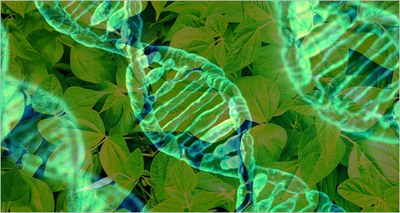 From the long-term collaboration between ENEA and the Regina Elena National Cancer Institute in Rome (IRE) comes the platform GGV (Green genetic Vaccine), an innovative strategy based on two patents for a rapid, safe and low-cost manufacturing of genetic vaccines using plant DNA sequences. Partly funded by the 5xmille to ENEA (a pre-tax donation of 0.005 of one’s income) [1], these innovative immunostimulatory strategies can prevent or cure tumors and contagious diseases such as the HPV (Human Papillomavirus), SARS, Zika and flu. Genetic vaccines have already been marketed in veterinary medicine and several advanced clinical studies are evaluating new applications in human medicine.
From the long-term collaboration between ENEA and the Regina Elena National Cancer Institute in Rome (IRE) comes the platform GGV (Green genetic Vaccine), an innovative strategy based on two patents for a rapid, safe and low-cost manufacturing of genetic vaccines using plant DNA sequences. Partly funded by the 5xmille to ENEA (a pre-tax donation of 0.005 of one’s income) [1], these innovative immunostimulatory strategies can prevent or cure tumors and contagious diseases such as the HPV (Human Papillomavirus), SARS, Zika and flu. Genetic vaccines have already been marketed in veterinary medicine and several advanced clinical studies are evaluating new applications in human medicine.
The first patent[2], to which the University of L’Aquila collaborated, has shown how an experimental vaccin, based on the fusion between a plant gene and a high-risk HPV gene, is capable of eliciting an effective immune response for the treatment of tumors associated with HPV, such as cervical cancer and some oropharyngeal cancers.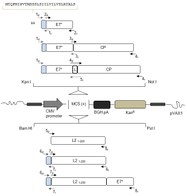
The second innovation[3] employs a plant sequence derived from a plant protein in order to design a genetic vaccine capable of eliciting an effective immune response for the prevention of HPV transmission and, in theory, other infectious diseases, including emerging or re-emerging diseases such as the SARS, Zika, Chikungunya, flu and, more generally, those identified as global priorities by the World Health Organization[4].
But there’s more: the strategy undelying the platform has also proved effective in preventing diseases related to the onset of cancer.
“We’ve proved for the first time that the genetic fusion of a short sequence of a plant protein with HPV proteins (antigens) can be used as a carrier for the antigen virus within the cells of a mammal” Silvia Massa, a young researcher at the ENEA “Biotechnologies and AgroIndustry Division, explained.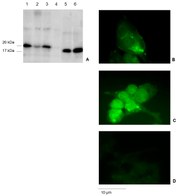
But that’s not all. This strategy is capable of solving one of the major problems of genetic vaccines, namely their limited ability of inducing a proper immune response. In fact, especially when combined with a specific administration technique called electroporation, these vaccines induce a rapid, strong and long-lasting immune response, which has proved effective also against antigenes able to escape from the immune system.
“In this respect, the ENEA and IRE studies have proved that, according to the needs, the use of proper plant sequences allows to modulate and even strenghten the immune response requested, through cells in the case of cancer, or antibodies in the case of infections”, Silvia Massa pointed out.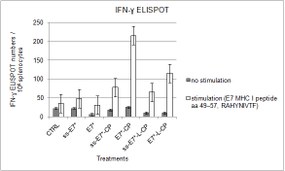
Other advantages of plant-based immuno-stimulating genetic vaccines are increased safety as compared to human or bacteria derived molecules, which could induce secondary or autoimmune reactions, and the fact of not requiring the cold chain, a critical aspect especially in developing countries
“Due to climate change, migration, conflicts, the bioterrorism threat, the burgeoning antibiotic resistance and ageing population, many infectious and chronic diseases will have an increasing medical impact on the population and it’s therefore compelling to develop new prevention and control methods up to the 21th century challenges”, Rosella Franconi, researcher at the ENEA Technologies and Methodologies for Health Conservation Division, said. “With this objective, the platform GGV may represent a key tool for boosting prevention and biosafety policies from the perspective of One Health Medicine, the international strategy for preventing the spread of diseases and for protecting biodiversity and the ecosystem integrity” Rosella Falconi concluded.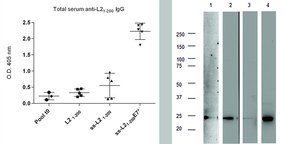
For more information please contact:
Rosella Franconi, ENEA – Division of Technologies and Methodologies for Health Protection, rosella.franconi@enea.it
Silvia Massa, ENEA – Division of Biotechnologies and AgroIndustry silvia.massa@enea.it
http://brevetti.enea.it/tabella.php?PME_sys_fl=0&PME_sys_fm=0&PME_sys_sfn[0]=-1&&pino=&PME_sys_operation=PME_op_View&PME_sys_rec=705 (Italian version)
http://industria.enea.it/proprieta-intellettuale-brevetti/brevetti/sequenza-segnale-di-proteina-vegetale-come-coadiuvante-in-vaccini-a-dna (Italian version)
http://industria.enea.it/news/2017/brevettata-tecnologia-per-la-produzione-di-vaccini-genetici-per-la-prevenzione-di-infezioni-e-cura-dei-tumori (Italian version)
For in-depht information:
http://eai.enea.it/archivio/la-sanita-tra-scienza-e-tecnologia/papillomavirus-umano-hpv-e-cancro-nuove-strategie-terapeutiche-e-diagnostiche/ (Italian version)
[1] 'Studies of young researchers for the health of women and children - New therapeutic strategies for the treatment of cancer' - 2014-2015

